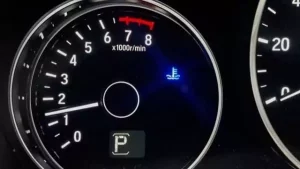Many people believe that it's necessary to warm up the car before driving. This belief dates back to the days of old cars that needed time to warm up the engine before setting off. However, modern engines include technologies that allow you to start driving without the need for preheating.
Warming up is the process of running the engine for a certain duration before driving the car, which is usually done during the cold months when the engine is cold. However, there are updates suggesting that there is no need to warm up the car before driving.

How does a car engine work?
The car engine consists of several parts, including cylinders, pistons, valves, spark plugs, and the crankshaft. The engine converts the chemical energy stored in the fuel into kinetic energy, this is accomplished by rotating the crankshaft, which is moved by the pistons.
The conversion of fuel into kinetic energy requires a certain temperature for the fuel. Given that modern engines use quick-ignition fuel, their temperature increases rapidly as soon as the engine starts. Therefore, there is no need for preheating to initiate the chemical reaction necessary to generate kinetic energy.
What is the impact of preheating on the engine?
In fact, preheating can lead to increased wear on the engine, especially if the temperature is too high. It can also increase the use of unnecessary fuel consumption during preheating, as the fuel is consumed while the car is warming up.
However, if the air temperature is very low, starting to drive might be somewhat difficult. In this case, the engine can be warmed up for just about 30 seconds before starting.
What are the best ways to warm up the engine?
If the ambient temperature is low, the engine can be warmed up for only 30 seconds before setting off, and pre-warming can also be completely avoided by starting to drive slowly and avoiding big acceleration at the beginning.
You should also avoid running the engine for extended periods without driving, as this increases fuel consumption and may lead to increased wear on the engine.
The Damages of Not Warming Up the Car
Engine damage
When you start the car without warming up the engine, the oil and other substances in the engine do not reach the appropriate operating temperature. As a result, engine wear may occur, leading to its damage.
2- Increased fuel consumption
When you start the car without warming up the engine, it needs to use more fuel to heat the engine and make it operate properly. Therefore, fuel consumption significantly increases, which leads to higher operating and maintenance costs in the long run.
3- Damages to the exhaust system
When you start the car without warming up the engine, the cold conditions can cause damage to the exhaust system. The exhaust system contains sensors that need to be heated in order to operate correctly. If not heated properly, they can become damaged and stop functioning.
How to avoid damage caused by not warming up the car.
Ensure the engine is properly heated.
Before use, you need to properly warm up the engine, which can be done by running the car for 5-10 minutes, and then start moving the vehicle slowly at first. After this, you can drive normally.
2- Stay in touch with the maintenance technician.
A maintenance technician can assist you in avoiding damage that can occur when the car is not warmed up. They can guide you on how to properly heat the engine and provide tips for keeping your car in good condition.
Also read:5 Things That Reveal The Efficiency of a Used Car Engine

Tips for warming up your car on cold days.
Use the engine cover.
You can use the engine cover to heat up the engine faster, as the cover traps heat and assists in the quick and efficient warming of the engine.
2- Use the appropriate oils.
Use the appropriate engine oils for cold weather, as these oils can help improve engine performance in low temperatures.
3- Stop before a complete halt.
Upon reaching your destination, you should stop for a few minutes and run the engine quietly before completely shutting it off. This helps to gradually cool the engine and avoid any damage that might occur due to abrupt stopping.
4- Avoid running unnecessary accessories.
Like the air conditioner and the radio, they start when the car starts, which helps save energy and heats the engine faster.
Benefits of Warming Up the Car
Increasing the lifespan of the engine
Warming up the car before taking off is an important procedure as it helps extend the lifespan of the engine. When the engine is cold, the oil is more viscous and less dense, which means that the oil does not circulate easily within the engine.
It is stored in a specific place. When the engine heats up, the oil becomes denser, and therefore it spreads better.The EngineAnd protects it from corrosion.
2- Improving car performance
When the engine is cold, many harmful particles are released into the air, and larger amounts of emissions are produced.
When the engine is hot, harmful factors are regulated and exhaust gases are filtered before being released into the air. This helps improve car performance and reduce harmful emissions.
3- Improve fuel consumption
Properly warming up the car before setting off significantly improves fuel consumption. When the engine is warm, the car's performance is enhanced, harmful emissions are reduced, and the engine consumes fuel more efficiently.
Therefore, properly heating your car can lead to fuel savings and reduced maintenance costs.

4- Avoid corrosion.
When the engine is cold, wear occurs faster and can lead to engine damage. If the car has been parked for a long time and is started directly, this puts significant pressure on the engine.
This increases the chance of corrosion, so the car should be gradually and slowly warmed up to avoid excessive wear on the engine.

Comments